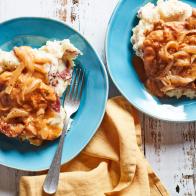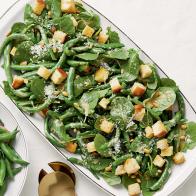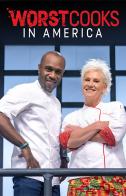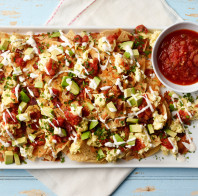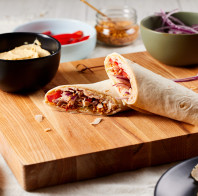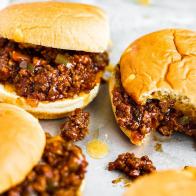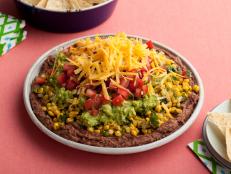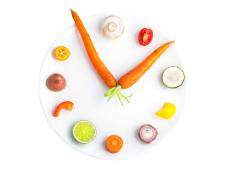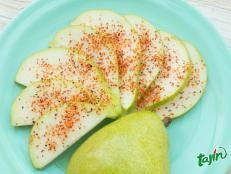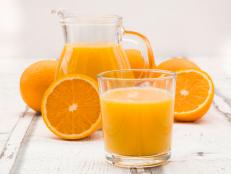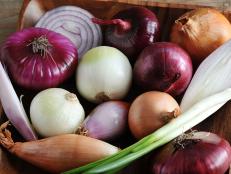What Is Food Combining?
Followers of this diet claim it aids digestion and helps with weight loss. We asked a dietitian.

Linda Raymond/Getty Images
When I first heard the term “food combining,” I thought it was in reference to pairing proteins and fats for blood sugar stabilization; that is until I did a deeper dive and found out that it’s actually a trendy new diet making its way around social media. Before we get into the nitty-gritty, it’s important to note that this diet is not rooted in science, it goes against basic nutritional biochemistry and human evolution, and quite frankly, it may lead to the dangerous gateway to disordered eating. If you’re looking for more information on a healthier way to combine food groups for optimal health, consult a registered dietitian.
What Is Food Combining?
Food Combining is the philosophy that separating certain macronutrients and food groups can help with digestion and assist with overall weight loss. The belief is that eating the “wrong combination” of foods, creates a buildup of disease-causing toxins and an increase in digestive stress. Proponents of Food Combining believe that the three macronutrients — protein, fats and carbs — take different times to digest and uniquely affect the pH level in the stomach, so they should not be eaten together. This eating pattern is similar to an Ayurvedic diet, which states that combining raw and cooked foods together can slow down your digestive processes and negatively impact your health.
What’s the Problem with Food Combining?
The fact is the stomach is a highly acidic environment (on purpose) in order to break down your food no matter what combination you eat it in and kill off any bacteria that could wreak havoc on your intestines. Once food passes through the stomach to the intestines, it enters a basic pH environment, and gets further broken down and either absorbed into your bloodstream or moved through your intestines until it leaves your body as stool. While all of this is occurring, your body is working hard to tightly regulate the pH in your stomach, your intestines, and your blood to keep your body functioning optimally. (In fact, if your blood falls out of a very narrow pH range of 7.35 to 7.45, you’re probably pretty sick and belong in the ICU.)
The Rules of Food Combining, Debunked
Food Combining classifies foods as acidic, alkaline, or neutral. For example, meat, cheese, seafood, chicken, and other proteins are classified as acidic; while breads, pastas, and cookies are classified as alkaline. Here’s what can happen if you follow a Food Combining diet.
Eat fruit on an empty stomach.
Starting the day with just fruit floods the intestines with sugar in the form of fructose. For anyone with fructose intolerance, IBS, or a surgical history that involves the stomach or intestines, this can lead to diarrhea. Fruit on an empty stomach will also cause your blood sugar to spike, which can lead to a sugar crash later on. People diagnosed with diabetes should also avoid blood sugar spikes, as they can lead to a variety of scary complications (hospitalization and coma in the short-term; amputations, kidney failure, and blindness in the long-term).
Grains and vegetables are acceptable, solo.
Grains and veggies are great sources of fiber, but again, if you have any issues with blood sugar control, eating rice without a protein will lead to another blood sugar spike. Pairing your fiber-containing grains and veggies with a protein slows down the digestive processes, keeping you full for longer and reducing the impulse to reach for more snacks before your next meal.
Starch and protein cannot be eaten together.
Eating starch alone will also cause your blood sugar to spike rapidly and drop rapidly, which will then cause you to crave more starch because your blood sugar is on a rollercoaster and your body just wants to hop off. Also, after burning through that starch so quickly, you’re hungry. If you eat the starch and protein together, digestion is delayed, which then slows the increase in your blood sugar (think of the bunny hill versus double-black diamond), keeps you feeling full for longer, and thus reduces your urge to overeat.
Neutral foods can be eaten with any combination of foods. Neutral foods include eggs, chocolate, lemons, and oils.
I know they’re considered neutral, but it seems that these foods might also fall into the acidic or alkaline groups. Eggs are a protein, which is considered an alkaline food group. And how are lemons not considered an acid-producing food? Asking for a friend.
Refined sugar and alcohol must be avoided. Avoid processed foods in general because they contain fat and sugar.
While these foods should be limited in any healthy eating pattern, in general, will you have any quality of life if you're never able to look at cookies or have a cocktail again? This seems like a dangerous road to restrictive eating, which can lead to binging on the foods you’re “not supposed to have” later on and thus weight gain or an eating disorder.
A caveat on alcohol: You can have some wines and beer, but they can only be consumed with starches or cooked vegetables.
Not drinking on an empty stomach is important, but there’s no science to only being able to have a drink with starch or vegetables. Drinking while consuming something with protein and fat would be my recommendation as a dietitian.
Bottom Line
In general, Food Combining is a lot of work and confusion trying to remember which foods go with what. I’m always in favor of eating patterns that promote eating whole foods, but not ones that toe the line of disordered eating and aren’t rooted in science. Since nutrition science is complex enough, let’s agree that this one is just another fad and not really worth your time or sanity. Still confused? Seek out a registered dietitian who can help you understand how food affects your body and work with you to make more informed choices that are both sustainable and in line with your goals.
Vanessa Rissetto received her MS in Marketing at NYU and completed her Dietetic Internship at Mount Sinai Hospital where she worked as a Senior Dietitian for five years. She is the co-founder of Culina Health and is certified in Adult Weight Management (Levels I & II) by the Academy of Nutrition and Dietetics. Her work in private practice also includes treatment of GI disorders, bariatric surgery, weight management, PCOS, and family nutrition. She loves helping clients take an active role in their health journey, motivating them and ensuring that they always achieve success. Vanessa was named by one of the top 5 black nutritionists that will change the way you think about food by Essence magazine. Vanessa lives in Hoboken NJ with her husband, two kids and their new goldendoodle Freddie. An exercise enthusiast, she is always up for a class as long as it's after she rides her Peloton.
Related Links:

